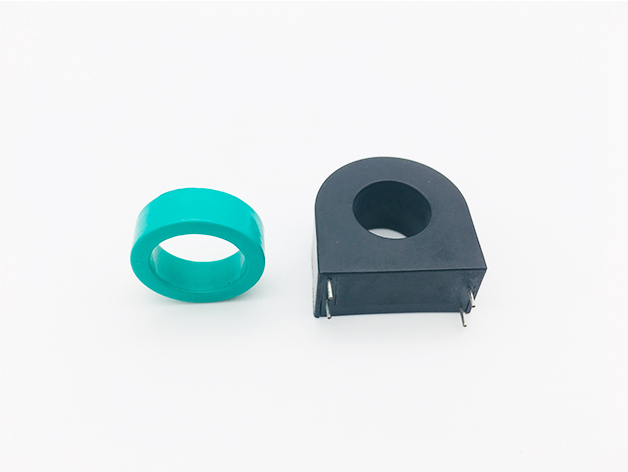Fe-based nanocrystalline cores are highly suitable for use in current transformers (CTs) due to their unique material properties, which align well with the requirements of such applications. Here are the key reasons why they are applied in current transformers:

1. High Magnetic Permeability
Fe-based nanocrystalline alloy cores exhibit extremely high magnetic permeability, which allows them to efficiently detect and measure small magnetic fields generated by the current flowing through the conductor. This is crucial for accurate current measurement in CTs.
2. Low Core Loss
These cores have very low hysteresis and eddy current losses, especially at high frequencies. This makes them energy-efficient and reduces heat generation, which is important for maintaining the stability and accuracy of the transformer over time.
3. Wide Operating Frequency Range
Fe-based nanocrystalline alloy materials can operate effectively over a wide frequency range, from low frequencies (e.g., 50/60 Hz) to high frequencies (up to several kHz). This versatility makes them suitable for various applications, including power systems and modern electronic devices.
4. High Saturation Induction
These cores have a high saturation flux density (typically around 1.2-1.3 T), which allows them to handle high currents without saturating. This is critical for CTs, which need to operate accurately even under high-load conditions.
5. Excellent Linearity
The B-H curve of Fe-based nanocrystalline cores is highly linear, ensuring accurate current measurement across a wide range of operating conditions. This linearity minimizes errors in current sensing and improves the reliability of the transformer.
6. Temperature Stability
Fe-based nanocrystalline materials maintain their magnetic properties over a wide temperature range, making them suitable for use in environments with varying temperatures. This stability ensures consistent performance of the CT under different operating conditions.
7. Compact and Lightweight Design
Due to their high permeability and low core loss, Fe-based nanocrystalline current transformer cores can be designed to be smaller and lighter than traditional cores (e.g., silicon steel or ferrite). This is advantageous for modern applications where space and weight are critical factors.
8. Cost-Effectiveness
While nanocrystalline materials may have a higher initial cost compared to some traditional materials, their superior performance and efficiency often result in lower overall system costs, especially in high-performance applications.
9. Improved Accuracy and Sensitivity
The combination of high permeability, low core loss, and excellent linearity enables Fe-based nanocrystalline cores to provide highly accurate and sensitive current measurements, which are essential for protective relaying and metering in power systems.
10. Resistance to Aging and Degradation
Fe-based nanocrystalline cores are highly stable over time, with minimal aging effects. This ensures long-term reliability and reduces the need for frequent maintenance or replacement.
Fe-based nanocrystalline cores are ideal for current transformers because they offer a combination of high permeability, low core loss, wide frequency range, high saturation induction, and excellent linearity. These properties enable accurate, efficient, and reliable current measurement, making them a preferred choice for modern CT designs in power systems and industrial applications.
